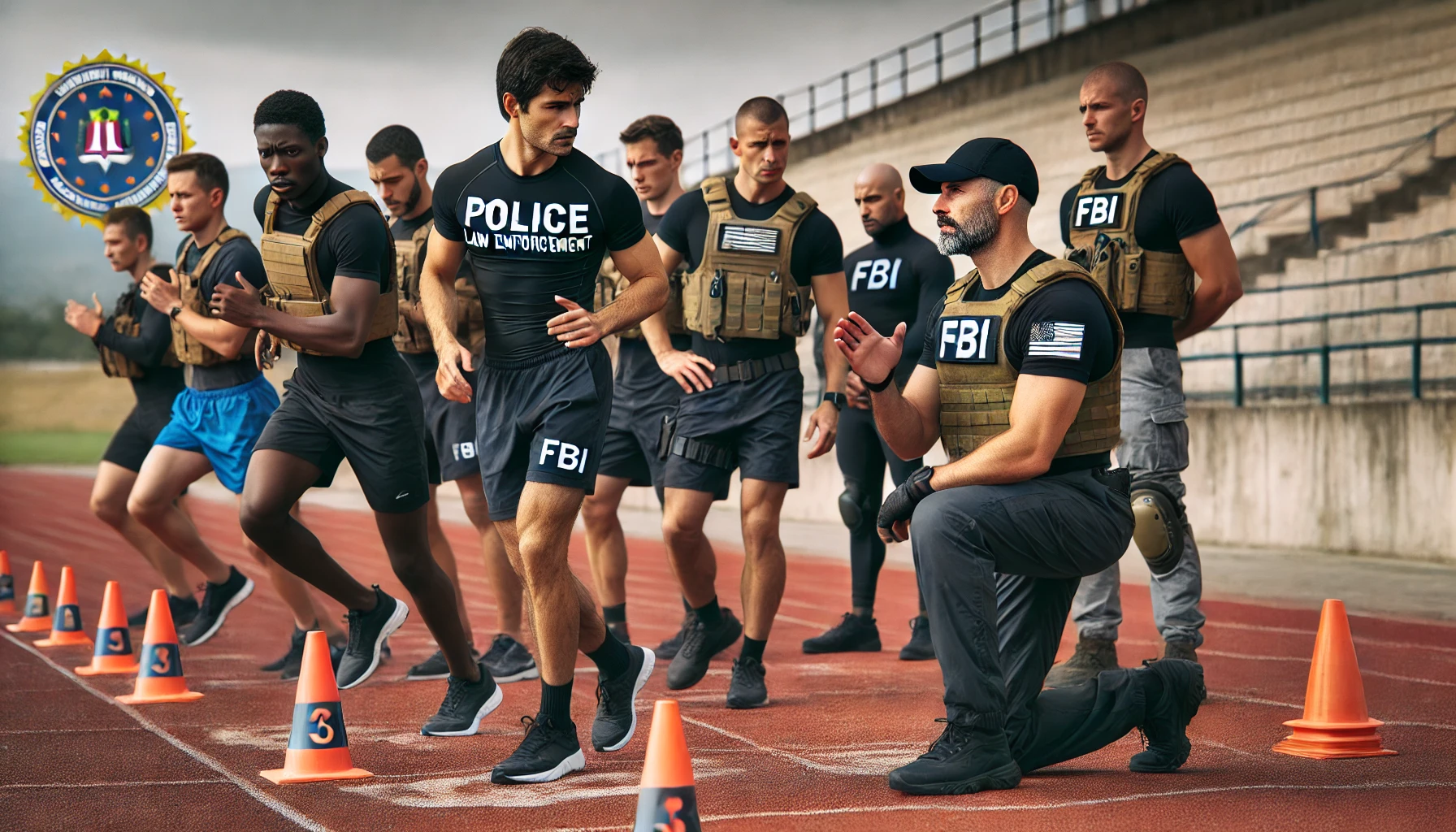Taking a law enforcement physical fitness test (PFT/PTA) can be challenging you must prepare yourself beforehand
Law enforcement is an exciting and rewarding career. However, it is also one of the most physically demanding professions. Unlike other labor-intensive jobs that are designed around the capabilities of the workforce, law enforcement officers respond to the demands of all emergencies. This means that a high level of physical fitness is essential in all police functions.
To pass the running segment, individuals need to prepare, both aspect physically and tactically (run). Each department runs its own version of the physical test, all tests are designed to test endurance, body strength, and agility as well as the mental determination of each candidate.

For example the FBI requirer the woman hoping to achieve the maximum score of 50 would need to complete 57 sit-ups in one minute, sprint 300 meters in 49.9 seconds or under, finish 45 push-ups or more (untimed), run 1.5 miles in 10 minutes, 34 seconds or less, and complete 10 pull-ups or more, untimed.
And man hoping to achieve the maximum score of 50 would need to complete at least 58 sit-ups in one minute, run 300 meters in 40.9 seconds or less, finish 71 push-ups in an unlimited amount of time, run 1.5 miles in 8 minutes, 59 seconds or less, and finish 20 pull-ups or more in an unlimited amount of time
To assist you on your journey, I have developed this training guide to help you build skills, coordination, tactical runs and speed is essential to pass the mandatory sections of the PFT
This provides detailed instruction, drills and photos depicting the proper form and technique to build strength and capacity.
1.Core Stabilization
All the power and speed come from a strong and flexible core here some core exercise to make your hip and waist strong and flexible.
- Hip Raise
- Plank Up & Down
- Russian Twist
- Loop Resistance Band Drills
 Posture:
Posture:
Anterior pelvic (figure A) (also known as “lower crossed syndrome”) is characterized by a forward tipped pelvis that causes the hips to push out back and the abdominals to stick out forward. As a result, this creates a curve in the lower back. This postural pattern inhibit a proper force production, limited a right propulsion or the activation of the gluten.
To produce the right force on the ground it is essential that you perform a correct posture, a posterior pelvic (figure B) position will give you a maximum force production when running.
2.Running Form & Mechanics
A lots of people don’t understand what is a proper running form. The following drills will focus on developing the proper hip drive and arm action necessary to run fast.
3.Drills (videos)
For those who don’t understand what is the proper form to have when running, those videos below will show you some key drills that isolates phases of a running cycle movement. You have to practice them at every training session until it become a second nature to you. Ones you understand those individual movement, you now will be able to put them all together and implement them in your runs.
Walking High Knee: Lift your knee and keep pressure on the elastic band without leaning too much forward
High Knee: Bounce from you hips, shift in the air and stroke the ground when your opposite knee is at his highest point and your leg have to be straight just before hitting the ground.
Mid-Knee Skipping: Hit the ground a the right angle. Propels yourself forward generate enough force on he ground to go forward.
Ankling: helps facilitate the proper loading and sprint during running. gradually pick-up a pace and keep an high cadence.
Wall Knee Drive: Helps for a faster turnover (leg speed rotation). Flex your hip flexor and knee simultaneously when bringing back your knee forward. Repeat that exercises by increasing the speed movement. Be careful do not flex your knee before your flexing your hip flexor, or it will cause your heel to come back form too far out behind which will prevent you from attacking the ground withe the proper angle. (breaking effect).
Drive Walking: Teach you how to drive your knee forward, penetrate the air. By driving your knee out it will give you a longer stride without over striding.
Over Knee Marching: Bring your ankle up and over your opposite knee’s level so, you can use your front leg as a piston also, because when attacking the ground from the top the gravity will help you to stroke the ground with more power and speed.
Gestural Speed: helps to maintain your top speed and form at an high cadence as long as possible.
Power Bound Drill: Explosive exercises help to resist inertia forces.
Tactical Runs: Know how to allocate your effort. Go off fast but not all out, relax in the floating zone, that zone is where you don’t gain or lost ground you just maintain your speed, than re-acceleration and finish as strong as you can with an high cadence through the finish line.
There different ways to prepare a 300m, 800m or 1.5mile race, depending on, how far, your test is scheduled.
Running training program example here
Reconize the 5 commun mistakes:
1. Back cycling: Too much backside mechanics and falling forward
2. Over striding: Reaching out forward with your foot
3. Anterior pelvic: Hips too far behind, butt stick out
4. Hip too low: Hip under walking level
5. Bad Coordination

